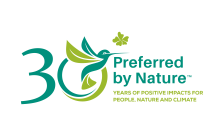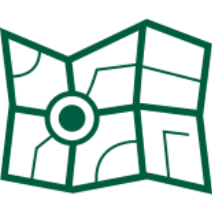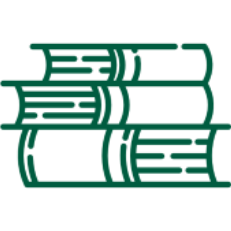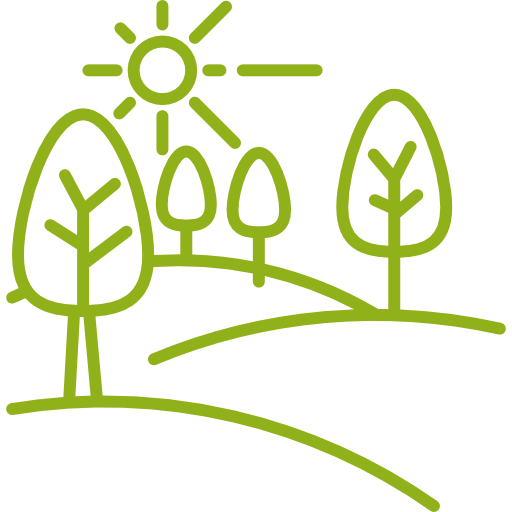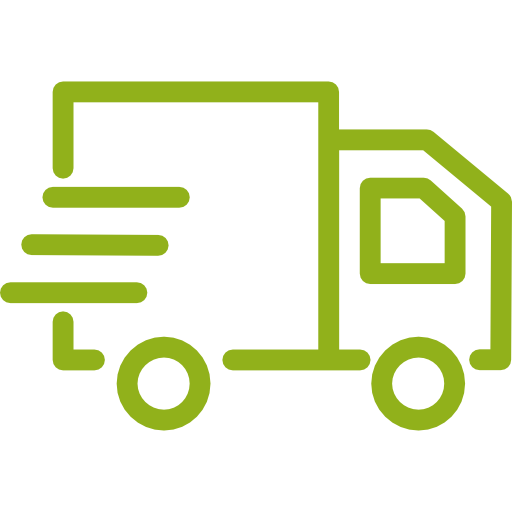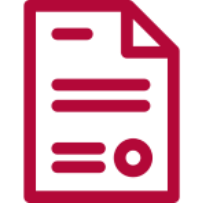The Timber Legality Risk Assessment contains an evaluation of the risk of illegality in Cambodia for five categories and 21 sub-categories of law
Nearly half of Cambodia is forested. Forest cover decreased from 60% in the 2010 (FA, 2010) to 45% (8.1 million ha) in 2016 (REDD Secretariat of Cambodia, 2016). The forest cover consists of Production Forests and Protected Areas. 26% of land in Cambodia is designated as a protected area, in which development is prohibited or limited for ecological or cultural conservation.
Data shows that between 2001 and 2018, Cambodia’s protected areas lost 557,000 hectares of tree cover, about 11.7% of the total protected area in Cambodia. Protected areas provide habitat for hundreds of species that are iconic to the region— some of which are threatened with extinction (Global Forest Watch, 2019). There are several reports and news articles reporting the illegal export of timber from Cambodia, specifically going to Vietnam and China.
The legal framework of the environment and natural resources sector has recently been under various reforms such as the jurisdictional transfer to the Ministry of Environment, redefinition of Forestry Administration and decentralization process across the country. Significant changes should be anticipated in the next 1-3 years. Since 2002 there has been a moratorium in place for timber from forest concessions in natural forest. The moratorium was put in place due to lack of control of the timber harvesting.
Several legality risks are present in Cambodia timber supply chains. The risks are wide ranging and relate to legal rights to harvest, taxes and fees timber harvesting activities, third parties’ rights, and trade and transport. If you are sourcing timber from Cambodia you should take care to ensure the extensive risks identified are not present in your supply chains or have been sufficiently mitigated
Export ban for logs, rough sawn timber, squared logs with a thickness or width of more than 25cm, and firewood and charcoal from natural forests.
Logging concessions within the Permanent Forest Estate have been suspended since 2002.
Export ban for all timber exports to Vietnam was reported in 2016. An official decree on this decision is not available.
The Uppsala Conflict Data Program records that there were 5,082 deaths from 2014-2017. Since 1946, conflict in Cambodia has included extra-state, interstate, intrastate conflicts and one-sided violence.
Appendix II
Dalbergia spp. (Rosewood)
Diospyros ferrea (Black ebony), Aquilaria spp
FSC Certified Forest Area: 7,896 hectares (4 December 2019)
Information Gathering
Timber sources
| Timber source | Description of Source Type |
|---|---|
| Conversion timber from infrastructure development | State Private Land that is allocated to private companies for development (e.g. hydro-power dams, national and provincial road areas). Harvest Permits are required to clear the land to prepare for the development. Like forest conversion for Economic Land Concession (ELC), timber harvest and forest clearance are made by separate entities. Timber from infrastructure development can be used for domestic use or export. |
| Economic Land Concession (ELCs) | State Private Land that is classified as production forest or within the protected areas system. ELC contracts are allocated to private companies to develop forest areas for other uses. Since 2014, ELCs can be awarded for agro-industrial purposes (including forest plantations) for maximum 50 years of lease duration and for areas no greater than 10,000 ha. ELC contracts can be revoked or cancelled by the government when legal and contractual requirements are not complied. State Private Land that is classified as production forest or within the protected areas system. ELC contracts are allocated to private companies to develop forest areas for other uses. Since 2014, ELCs can be awarded for agro-industrial purposes (including forest plantations) for maximum 50 years of lease duration and for areas no greater than 10,000 ha. ELC contracts can be revoked or cancelled by the government when legal and contractual requirements are not complied. Harvesting is supervised by Ministry of Agriculture, Forestry and Fisheries (MAFF) with technical recommendations by the Forestry Administration (an MAFF department). Harvest Permits are required. The actual timber harvest is required by the national regulations, to be carried out by an entity separate to ELC companies. The ELC companies only have rights to develop the ELC areas after forest areas have been converted. Prior to the jurisdictional transfer of 2016, both the Ministry of Agriculture, Forests and Fisheries (MAFF) and the Ministry of Environment (MoE) shared jurisdiction over ELCs, depending upon the location of each specific ELC (located within MAFF versus MoE holdings, as the case may be). However, since 2016, all ELCs are under MAFF supervision, even those ELCs previously approved by MoE and located within the MoE-supervised protected areas system. |
|
Timber / NTFP from Community forestry areas |
Community forests (CF) may only be located on state public property. A Community Forest Agreement with Management Plan (CFMP) is required (Forest law, article 43). Timber from community forestry areas can also be exported as long as the timber is purchased by Timber Export Companies. However, to date, there is no timber available from community forestry areas because almost all the community forestry sites have been established after 2004 and timber has not yet reached DBH ready for harvesting. Furthermore, almost all CF sites were created on degraded forestlands and a range of bureaucratic requirements (5 year waiting period, complications in management plan approval process, transportation permit requirements, etc.) have had the effect that there are no known instances of CFs being a source of legal timber. |
| Confiscated illegal timber | Transport Permits are required. Any drifted, stranded, sunk, unmarked logs, and any unclaimed timber shall be seized as state property and publicly auctioned. A transport permit (PC-2) is given to the auction winner, normally a Cambodian entity, to transport the seized timbers to their target processing sites. Illegal timbers that are confiscated within the protected areas are handled by Ministry of Environment (MoE). It is noted that the MoE officials are restricted to patrol illegal timber harvest only within the territories of protected areas, land outside protected areas are handled by MAFF. |
| Tree plantations |
Private land: Privately owned land, that is managed by private companies. Land must be registered as forest land, and a Registration Certificate is issued. State land: State Forest Land that is managed privately, either by Communities, individuals, households or the Forest Administration. Agreements for granting rights to plant trees must be obtained. |
| NTFP and Timber from Social Land Concessions. | State Private Land that is allocated for residential use and/or family farming as social land concessions. Timber derived from SLCs can enter the commercial timber chain including export. After five (5) years of tenure of State Private Land, the Social Land Concessions can be converted to private land; and forest plantations, if any, become private forest plantation. A land certificate and land tenure title are required. |
Documents to indicate legality
|
Legal rights to harvest |
Economic Land Concessions (ELCs)
Conversion timber from infrastructure development
Community Forest
|
|
Taxes and fees
|
|
|
Timber harvesting activities
|
|
|
Trade and transport |
|
Risk Assessment
Risk assessment summary
|
|
Legal rights to harvest
|
|
|
Taxes and fees
|
|
|
Timber harvesting activities
|
|
|
Third parties' rights
|
|
|
Trade and transport
|
Specified risk species
| Common/trade name | Scientific name | Notable information | CITES* Appendix |
|---|---|---|---|
|
Rosewood Krah Nuong |
Dalbergia spp. |
"Luxury" grade timber Dalbergia cambodiana is listed as endangered on the IUCN Red List. Dalbergia cochinchinensis (Siamese Rosewood) is listed as vulnerable on the IUCN Red List |
II |
|
Black ebony |
Diospyros ferrea |
|
II |
|
Pyinkado or Sokram សុក្រម (Căm xe in Vietnam) |
Xylia xylocarpa |
Common in the illegal trade with Vietnam (EIA 2018) |
|
|
Sramo/Sa mao tchet |
Terminalia chebula |
High value timber. Common in the illegal trade with Vietnam (EIA 2018) |
|
|
Padauk Thnong |
Pterocarpus macrocarpus |
"Luxury" grade timber. Prohibited from harvest and export in Cambodia in any form |
|
|
Beng បេង (Gõ đỏ in Vietnamese) |
Afzelia xylocarpa |
"Luxury" grade timber. | |
| Dai Khla | Gardenia ankorensis Pit |
"Luxury" grade timber. The wood of this species is similar to ivory, it is very expensive and sold by the kilogramme. |
Risk Mitigation
Mitigate the risks in your supply chain
Learn which actions we recommended to mitigate the risks associated with the timber sources from Cambodia.
Source Certified Materials
NEPCon believes that third party certification (for example FSC) can provide strong assurances of the legality of the products they cover. Companies seeking to mitigate the risks of sourcing illegal timber should seek to purchase third party certified materials wherever possible.
While the European Timber Regulation does not include an automatic “green lane” for certified products, it does recognise the value of certification as a tool for risk assessment and mitigation. The European Commission says that companies “may rate credibly certified products as having negligible risk of being illegal, i.e. suitable for placing on the market with no further risk mitigation measures, provided that the rest of the information gathered and the replies to the risk assessment questions do not contradict such a conclusion.”
For more information on using certified materials in your due diligence, including how to assess whether a certification system meets EUTR requirements, see the page on Certification and Due Diligence.
Mitigation recommendations for non-certified materials
1. Fully map your supply chain
- Our supply chain mapping tool can help you do this.
2. Obtain and verify documents
- Forest level documents
- Conversion timber from Economic Land Concessions (ELCs)
- Forest Inventory: lists of timber species and volumes
- Cadastral Maps
- Land Register
- Land use plan adopted by the Provincial-Municipal State Land Management Committee
- Environmental and Social impact assessment
- Detailed Solicited Proposal or Unsolicited Proposal
- Economic land concession contract
- Commercial registration
- Conversion timber from infrastructure development (hydropower dams)
- Memorandum of Understanding with Ministry of Mines and Energy (MME)
- Feasibility study
- Approval by the Council for the Development of Cambodia (CDC)
- Water use license from Ministry of Water Resources and Meteorology
- Environmental and social impact assessment
- Build-operate-transfer (BOT) contracts
- Community Forest
- Community Forest Agreement
- Conversion timber from Economic Land Concessions (ELCs)
- Taxes and fees
- Detail List of forest inventories and timber volume called Book "A"
- Certified documents issued: by Forestry Administration (for domestic transportation); by Ministry of Economy and Finance (for export timber, if any).
- Trade and transport
- Book A
- Transport permits
- PC-1 (Permit de Condure-1): Transport of logs from the stock pile to a defined processing mill;
- PC-2 (Permit de Condure-2): Transport timber products for the domestic markets
- PC/B (also referred to as PC-IMEX): Transport permit to allow timber and NTFP exported or imported.
- Export and custom
- Export licence issued by the Ministry of Commerce with visa issued by the head of the Forest Administration (Sub-Decree #131, article 7).
- Mills that produce timber product must obtain a PC-IMEX for the import or export of wood products.
3. Consult with stakeholders
4. Carry out on-site verification
5. Conduct targeted timber testing
- Conduct timber testing on samples of purchased material to verify the species or origin of timber, where appropriate. Read our Thematic Article on timber testing, a guide to laboratory techniques to determine species and origin of timber products, to find out more.
6. Avoid / do not buy
- Avoid products that include materials bought at spot- and/or open-markets
